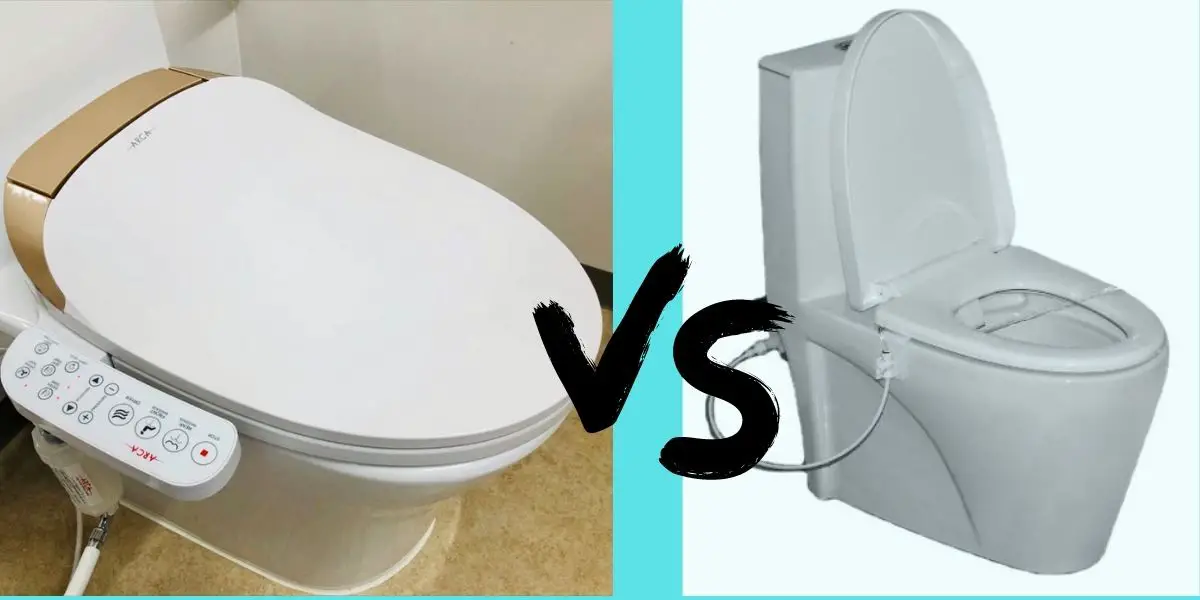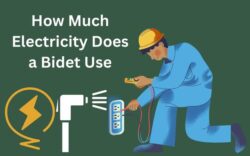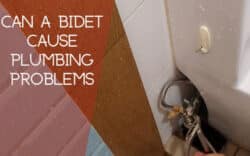What is the Difference Between Electric Vs Non-Electric Bidet: Pros & Cons of Bidet.

A bidet is a bowl or basin designed to be sat on for the purpose of personal hygiene. Unlike the traditional kind, the modern type has a built-in water supply and drainage opening and is therefore regulated as a plumbing fixture to make sure it adheres to local safety regulations.
It is connected to a cold or warm water supply means that one can wash with it. They are available in two-piece units, which consist of the bidet with its seat and supplemented by a roughing valve, fitting, tank, taps, pressure reducer and plumbing work.
In this article, I will go through the different types of bidet.
Difference Between Electric and Non-Electric Bidet
Features
Electric bidet seats come with a greater number of features and functions compared to non-electric bidets. The remote control or side panel of a toilet seat can be used to operate various functions. For example, you can clean your front and back with on-demand warm water, oscillation and pulsation nozzles, temperature and pressure control, heated seat, and air dryers, among other features.
However, non-electric bidet attachments are no-frills hygiene tools – they only spray water. They have adjustable spray pressure, and some models have the ability to adjust the nozzle angle and warm water.
Installation
A relatively handy person can easily install any kind of bidet in only 15-30 minutes. Some Certain bathroom setups, however, may be more complicated. Electric bidets require a compatible toilet, a cold water source, and an electrical outlet in the bathroom. If you already have a suitable toilet and an electrical outlet, installation is very easy.
A non-electric bidet requires a compatible toilet and cold water source; however, hot water is an option. Non-electric bidets are very simple to install and do not require an electrical outlet. To get warm water, you’ll need to use a hot water source close by – usually under a sink. In this case, you will need to run a separate hot water hose from under the sink over to the bidet, sometimes through a vanity cabinet.
Water Pressure
One of the advantages of non-electric bidets is their high spray pressure. Non-electric bidets have the advantage of being able to spray out a lot of water at high pressure. The water pressure powers them in your home. Although some users appreciate the higher spray pressure, others prefer a gentler pattern. In electric bidet seats, spray pressure is limited to the bidet’s internal water pump. There is ample pressure behind the water pump for a comfortable and aerated jet of water to wash you off with.
Warm water.
The water stream itself is smaller and uses much, much less water. Both types of sprays are effective for cleansing- the choice comes down to personal preference between the comfort provided by a bidet seat versus the force of a non-electric bidet.
Cost
Non-electric bidet attachments will always be cheaper than electric bidet attachments. The price ranges from $20 to $180 and the warranty are generally one year. The lifespan of a plastic bidet attachment is approximately two to three years. The price of an electronic bidet toilet seat can range from $200 to $1,000.
They are built like heavy-duty appliances and usually last between 6 and 10 years. The build quality for bidet seats is higher than for non-electric attachments, and the warranties are longer as well.
Bidets should be selected based on your preferences, budget, bathroom setup, and desired features.
Pros and Cons of Manual VS Electric Bidet
Manual Bidet/ Non Electric Bidet

There are several traditional sanitary devices that are able to function without electricity. A manual bidet offers certain advantages that no other have. The most obvious advantage is that there is a very minimal investment cost. An additional advantage of manual bidets is that they are completely devoid of any electrical components. In a manual or non-electric bidet, you can manually adjust the direction and flow of the water spray by using a lever or a knob attached to the spray head. Moreover, these spray heads do not use any electricity, so warm water is not provided by them. Hence, you do not get an enhanced toilet experience with manual bidets or non-electric bidets. Instead, you get to satisfy your basic needs. Furthermore, unless you manually clean the bidet every day, which is not a good idea since it is not hygiene. Obviously, nobody would like to clean the toilet seat every day.
Compared to the manual bidet system, the only drawback is that it must be operated manually. It requires patience and time to conserve the necessary water every time.
Pros and cons of Non-Electric Bidet.
Pros
- Non-electric bidets are easy to install and don’t require a plumber or technician.
- An energy-free non-electric bidet doesn’t require any electricity to operate
- More cost-effective and affordable
- Easy to use
Cons
- Hygienic issues
- There is no option to heat the seat
- Water pressure and temperature cannot be adjusted
- It does not provide warm water
- The nozzle is not self-cleaning
Electric Bidet

Electric bidet seats are electronic appliances and are built to provide maximum comfort and cleanliness. When compared to a non-electric bidet, an electric bidet has certain additional features. It allows one to enjoy warm water while on the toilet. You can also heat the seat of an electric bidet, which is nice for those cold winter mornings. You can also set a timer and operate the bidet remotely.
Consumers can now buy smart toilet devices powered by artificial intelligence, which save both water and electricity. The self-cleaning feature of electric bidets is convenient. They also keep the nozzle clean.
In the past few years, electrical bidets have revolutionized the way toilets operate. However, like any product, they have a few negative aspects as well, even though they have several benefits. The following list of pros and cons of electric bidets will assist you.
. The rising demand for bidets suggests they are looking to become part of the normal household. A heated bidet offers various benefits such as being more environmentally friendly, warm bidets are more hygienic for people who have problems with travelling through the colon, or even menstrual cycles can’t offer necessary cleaning.
Pros and Cons of Electric Bidet
Pros
- Easy to clean.
- More hygienic toilet experience.
- A temperature-adjustable seat is available.
- Provides warm water through an integrated heater.
- Some bidets can be controlled via a remote control.
- The seat can be raised or lowered automatically.
- Timer for specific functions.
- Since it is only activated when needed, it will consume very little electricity.
- Helpful for old and disabled people.
- Improve hygiene.
- Relaxes during relieving erythraea problem, nervous system disease, gastrointestinal disorder, gastritis.
- Improves skin condition by producing natural vitamin E.
- Eliminate constipation caused by haemorrhoids.
- Easier to use for pregnant women, elderly and disabled people.
Cons
- Electric bidets cost more
- A professional electrician is required to install
- Electricity-related hazards
- No desired fluctuation in water pressure.
The Concluding Words
It all depends on the features you want in your bathroom. Manual bidets are an affordable option for anyone who wants to have a bidet in their bathroom. It is cheaper, easier to install, and offers all other traditional benefits. In contrast, an electric bidet provides plenty of functions that are listed above. The most desired functions are more environmentally friendly, warm seats, and more hygienic. Additionally, it is also easy to use for people with problems traveling through the colon or even during menstrual cycles, which do not offer the proper cleaning.
Thanks for time to read this post..





![11 Best Handheld bidet sprayer for toilet in 2024 [Reviewed and Tested]](https://homequipments.com/wp-content/uploads/2022/11/Best-Handheld-Bidet-Sprayers-250x131.jpg)